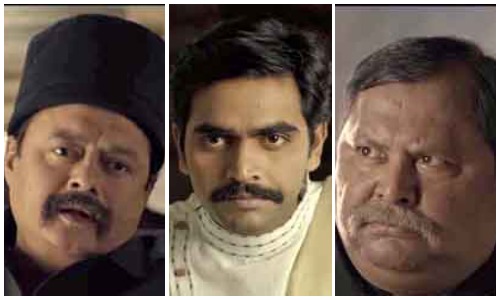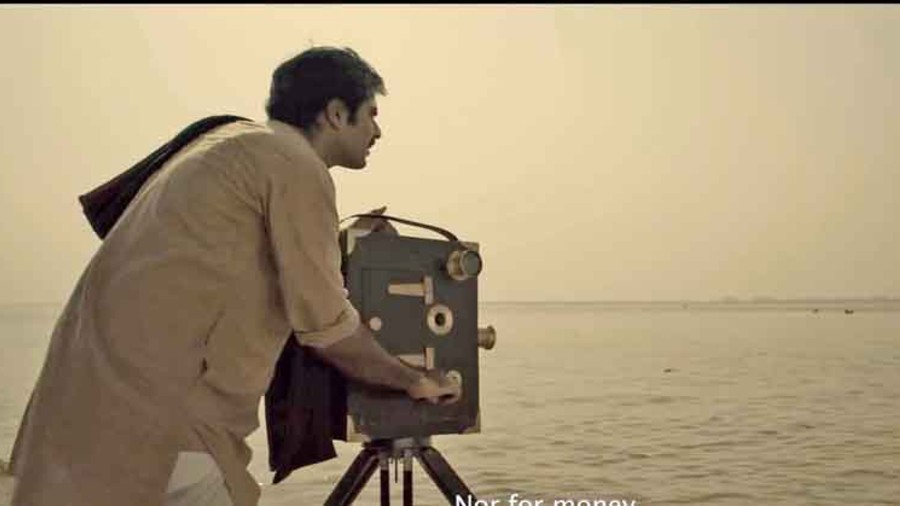Film-maker Arun Roy’s film Hiralal on Hiralal Sen, considered by many to be India’s first film-maker, is all set to hit the screens this Friday. Before the release, the director gets candid about his attempt to remind the Bengali audience of a forgotten icon.
What do you want to convey through the biopic?
I want to convey that a Bengali made India’s first documentary, India’s first ad film, India’s first bioscope and his name is Hiralal Sen. How did we forget that as a Bengali?
When did you decide to make a biopic on Hiralal Sen and what got you interested?
In India, wherever we ask who is the father of Indian cinema we get only one answer to that... Dadasaheb Phalke. But it was not possible for me to accept it and that is when I decided to do this film. The father of Indian cinema is Hiralal Sen. Dadasaheb Phalke taught and showed the path to Indians on how to do business with cinema. He is the father of Indian film industry not the father of Indian cinema and that is the reason I chose to make this film. We are always talking about Ritwik Ghatak, Satyajit Ray but we have forgotten this name (Hiralal Sen) completely.
So, was it more important for you to tell this story as a Bengali’s responsibility or as a film-maker’s responsibility?
I am very proud to be a Bengali and in all my films I always have something to say. As a film-maker I had to say this, why can’t we bring out the truth.
How did you do the research work for the film?
I took two years to write the script. We had to go through various books on that period, books on Amarendra Nath Dutta, Girish Ghosh.
Which part of Hiralal Sen’s life is the film focusing on?
The film starts when his age is 14-16 years and focuses on his works and his entire journey. How he did what he did. When I started doing research on his life, I found it to be very interesting. He did so many different works all by himself. He could draw portraits; he was a famous photographer of his time and then when he saw moving images for the first time, he started working on it. There was no one like him.

Saswata Chatterjee, Kinjal plays Hiralal Sen, Kharaj Mukherjee Sourced by the correspondent
How did you go about the casting of the film?
I was looking for a person whose look would match Hiralal Sen’s. My casting director helped me a lot. Whenever a good theatre work would happen, he would introduce me to them. Then one day I saw Kinjal Nanda and after seeing him I couldn’t think of anyone else. Kinjal plays Hiralal. Similarly it happened for the casting of Hemangini’s character. Amarendra Nath’s character is played by Arna. Girish Ghosh is being played by Kharaj Mukherjee. Everyone is from Bengali theatre.
Was it a conscious decision to include all theatre actors as a part of the cast?
Yes, I wanted that. The subject is very much connected with theatre. The actors are so good. Since I have incorporated a lot of new faces, without that skill it would not have been possible for me to present the film the way I wanted to.
Bengal’s theatre scene of that period has a reference in the trailer...
During those days Amarendra Nath Dutta was the star and so was Kusum Kumari Devi. Later, Amarendra Nath and Hiralal Sen came together to bring bioscope and theatre together. In between plays the films would be shown... how the whole thing happened and how both were connected can be understood and enjoyed after watching the film.
How challenging was it for the actors to get the mannerisms right of that period?
While doing my research I came to know about it. Mannerisms were different even for one who had knowledge or access to electricity and the one who didn’t. They were two very different individuals. Light was used in a different way. People had to get up at 5am to make optimum use of daylight. Lifestyle was different and the way people used to speak, walk, act were completely different. The actors provided the skill and the nuances of these mannerisms.
How was the shooting process?
VFX had a huge role to play in this shoot in recreating and designing the old Calcutta.
How challenging was it for you to recreate the period?
Actually, doing a period film in the Bengali film industry is in itself challenging because our budget is less. It was a tough job. But since all the artistes, technicians and everyone knew that we were going to do a tough job, so everyone worked as a team. Doing something alone and doing it with hundred people is different, it made the work easy for me, thanks to all my technicians and artistes. The only thing we used to always hope for is to finish the film. We didn’t want it to get stuck in the process in any way because we didn’t have the budget to restart the shoot.
We shot at many places like Chunchura and Barrackpore. A part of the film was also shot in Benaras.
Why did you choose to do the film in a sepia tone?
The film is showing a time period that is 100 years ago, there’s no contemporary connection. If we open a 100-year-old book the colour tone that we get, we wanted to capture that in the film. So, we had the colour plan like that with a sepia tone.
The cinematography is beautiful and effective...
The credit goes to cinematographer Gopi Bhagat. Bengali period films are often shot indoors and through the interiors we try to give the feel of a period. Since we have low budgets we have to do that and keep the shoot to a few rooms. But I wanted to do it differently, so we shot a major portion of the film outdoors.
What was your takeaway from the experience?
Doing the work on a low budget. Making a period piece on a low budget is very tough. That was an experience in itself. The whole unit worked under extreme pressure every day. If we had missed anything on any day, we didn’t have the budget to make it again.
It was screened in 2018 at KIFF. Why did it take time to release the film?
Being an independent film-maker and releasing the film was difficult. A special thanks to Kinjal. He did a lot for the film. His work on screen for this film is also very different. He did some incredible work. People need to see the movie for that.











